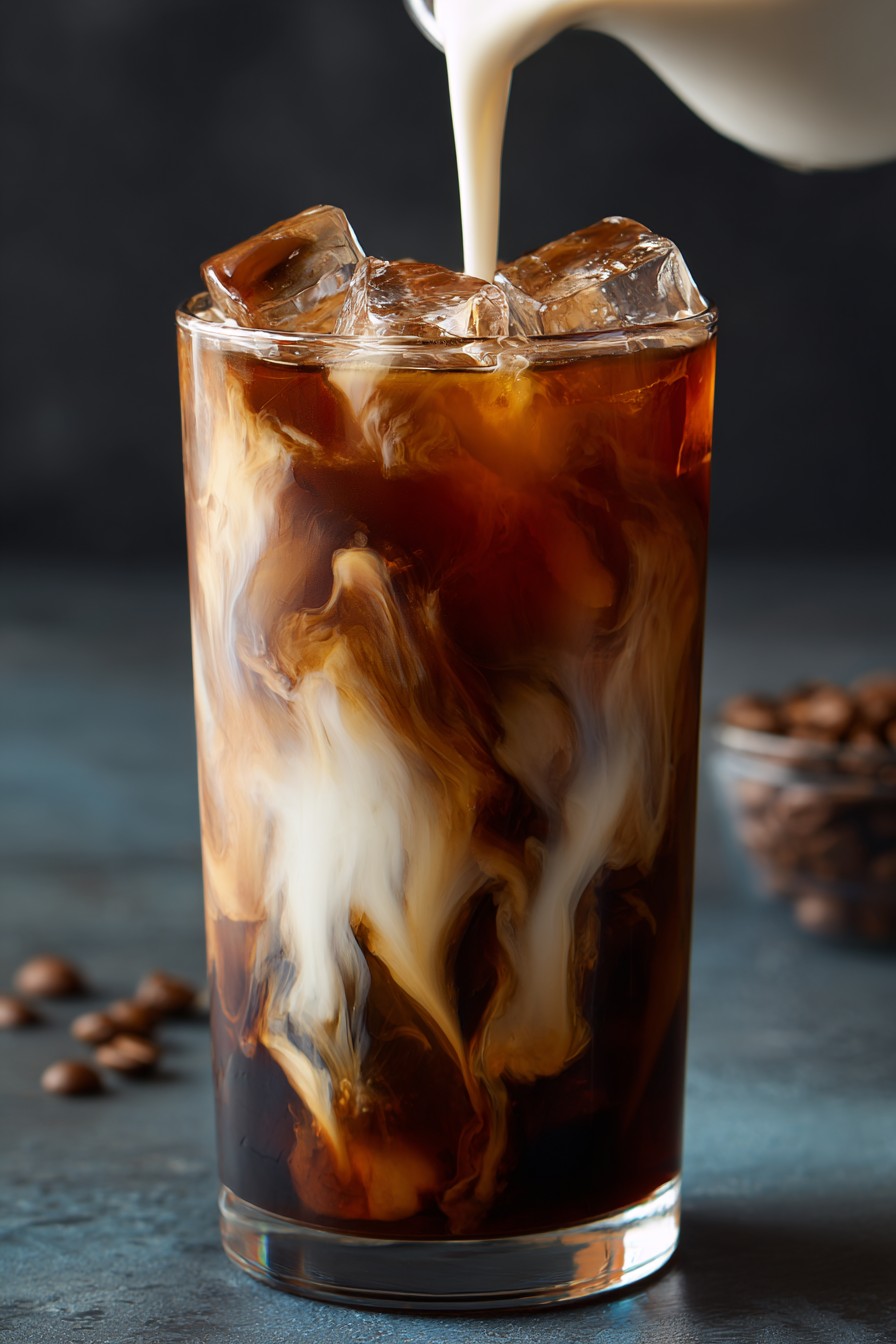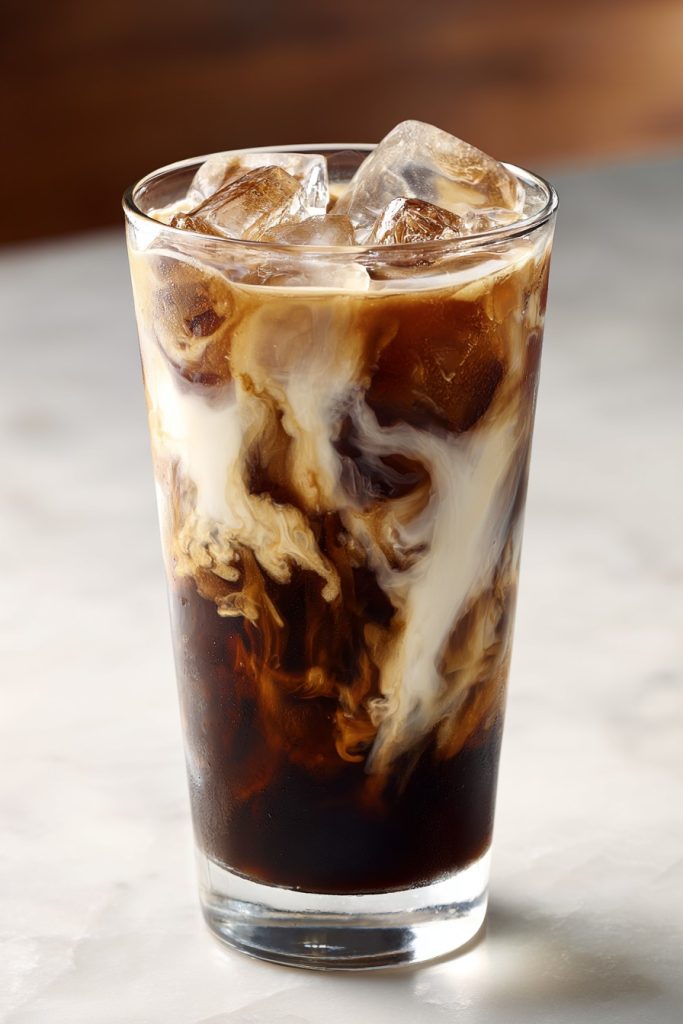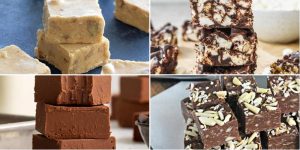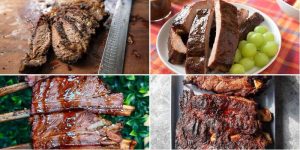Hailing from the smallest state with the biggest flavor impact, coffee milk transports you directly to the nostalgic diners of Providence, where this sweet, caffeinated tradition has warmed hearts since the 1930s. Here in America’s Ocean State, this humble beverage represents more than just a drink—it’s a cultural touchstone that blends Italian immigrant coffee traditions with New England practicality, creating something uniquely comforting and distinctly American. Imagine the rich coffee syrup slowly swirling through cold milk, creating caramel-colored ribbons that promise both childhood memories and sophisticated flavor in every sip.
Why This Recipe Works
- The careful balance of strong brewed coffee and sugar creates a syrup that’s neither too bitter nor cloyingly sweet, capturing the authentic Rhode Island diner experience where the coffee flavor shines through without overwhelming the palate
- Using whole milk provides the perfect creamy canvas for the coffee syrup, allowing the flavors to meld beautifully while maintaining the traditional texture that made this beverage an official state drink in 1993
- The addition of vanilla extract adds subtle complexity that elevates the simple combination, much like how Italian immigrants might have enhanced their coffee traditions when adapting to American ingredients
- Chilling the syrup before mixing ensures the milk doesn’t curdle and maintains the refreshing quality that makes this perfect for both morning awakenings and afternoon pick-me-ups
- The straightforward preparation method honors the working-class origins of this beverage while delivering consistently perfect results every time
Ingredients
- 1 cup strongly brewed coffee, preferably dark roast
- 1 cup granulated sugar
- 1 teaspoon vanilla extract
- 4 cups cold whole milk
- Ice cubes for serving
Equipment Needed
- Medium saucepan
- Whisk
- Measuring cups and spoons
- Heatproof container or mason jar for storage
- Tall glasses for serving
- Stirring spoon
Instructions

Brewing the Foundation Coffee
Begin by brewing one cup of exceptionally strong coffee using your preferred method, whether that’s French press, pour-over, or traditional drip coffee maker. The key here is achieving a concentrated brew that can stand up to the sweetness of the sugar while maintaining its robust coffee character. Think of the coffee traditions from Ethiopia, where strong, almost syrupy coffee forms the basis of ceremonial preparations, or Italian espresso culture that values intensity in small packages. Use a dark roast coffee bean if possible, as the chocolate and caramel notes will complement the final syrup beautifully. The coffee should be freshly brewed and hot when you begin the syrup-making process, as the heat will help dissolve the sugar completely. Measure precisely using liquid measuring cups to ensure the proper coffee-to-sugar ratio that defines authentic coffee milk.
Creating the Signature Syrup
Pour the freshly brewed hot coffee into a medium saucepan and place it over medium heat on your stovetop. Gradually whisk in one cup of granulated sugar, making sure to incorporate it completely before the mixture comes to a simmer. As the sugar dissolves, you’ll notice the liquid transforming from thin coffee to a slightly thicker, glossy syrup. Continue heating until the mixture reaches a gentle simmer, then immediately reduce the heat to low. Cook for exactly 8-10 minutes, stirring occasionally with your whisk to prevent scorching on the bottom of the pan. The syrup should coat the back of a spoon but remain pourable—this is the perfect consistency that will mix beautifully with milk without sinking to the bottom. Tip: For an extra layer of flavor, consider adding a cinnamon stick or orange peel during this simmering stage, then remove before cooling.
Infusing with Vanilla Essence
Once your coffee syrup has simmered for the appropriate time and achieved the desired consistency, remove the saucepan from heat entirely. Immediately stir in one teaspoon of pure vanilla extract, watching as the aromatic compounds release their floral, sweet notes into the warm syrup. The vanilla not only adds complexity but also helps round out any bitter edges that might remain from the strong coffee. Imagine the vanilla plantations of Madagascar, where these precious beans are harvested and cured, bringing their unique flavor profile to dishes and drinks around the world. Allow the syrup to cool in the pan for 15 minutes, during which time the vanilla will fully integrate and the syrup will thicken slightly as it cools. The aroma at this stage should be deeply inviting, with coffee and vanilla notes dancing together in perfect harmony.
Chilling to Perfection
Carefully pour the warm coffee-vanilla syrup into a heatproof container or mason jar, leaving about an inch of headspace to allow for expansion if freezing. Place the uncovered container in your refrigerator for at least 2 hours, or until completely chilled to 40°F. This cooling period is crucial for several reasons: it allows the flavors to meld and mature, it ensures the syrup won’t curdle the milk when mixed, and it creates the refreshing temperature contrast that makes coffee milk so delightful. The syrup will continue to thicken as it cools, reaching the ideal viscosity for mixing. Tip: If you’re in a hurry, you can place the sealed container in an ice bath for 30 minutes, swirling occasionally to speed up the cooling process while maintaining quality.
Assembling the Final Beverage
Fill two tall glasses three-quarters full with ice cubes, then pour 2 cups of cold whole milk into each glass. The whole milk provides the necessary fat content to carry the coffee flavors and create that signature creamy texture that made this beverage famous in Rhode Island diners. Drizzle 2-3 tablespoons of your chilled coffee syrup over the milk in each glass, watching as the dark syrup creates beautiful marbled patterns as it sinks through the white milk. Use a long spoon to stir vigorously from the bottom up, creating that characteristic light brown color that signals perfectly mixed coffee milk. The final temperature should be refreshingly cold, around 45-50°F, with the ice keeping it chilled without overly diluting the flavors. Serve immediately and enjoy this taste of New England history.
Tips and Tricks
For those looking to elevate their coffee milk experience beyond the basic recipe, consider these advanced techniques and insights. When selecting your coffee beans, opt for a blend with chocolate or nutty undertones rather than fruity or wine-like characteristics, as these complement the milk and sugar more harmoniously. If you have access to different brewing methods, cold brew concentrate can create an exceptionally smooth syrup with lower acidity, though you’ll need to gently heat it with sugar to achieve the proper syrup consistency. For storage, your coffee syrup will keep beautifully in the refrigerator for up to three weeks in an airtight container, making it perfect for quick morning preparations. If you notice crystallization occurring, simply gently reheat the syrup until the sugar redissolves. When experimenting with milk alternatives, whole milk remains the gold standard for authenticity, but if you must substitute, barista-style oat milk provides the closest texture and flavor compatibility. For an adult version that nods to coffee milk’s Italian-American roots, a splash of coffee liqueur or a hint of orange zest can transform this childhood favorite into a sophisticated evening treat. The ratio of syrup to milk can be adjusted to taste—traditional Rhode Island coffee milk tends toward the sweeter side, but you might prefer a more coffee-forward version with less syrup. If you’re making larger batches for gatherings, consider creating a coffee milk bar with different syrup flavors, various milk options, and garnishes like whipped cream, chocolate shavings, or cinnamon sticks for customization. Remember that the quality of your ingredients matters tremendously—using freshly ground coffee and pure vanilla extract rather than imitation will yield noticeably superior results. Finally, for the ultimate authentic experience, serve your coffee milk in classic diner-style glasses and consider pairing it with traditional Rhode Island foods like johnnycakes or clam cakes to complete the cultural immersion.
Recipe Variations
- Coconut Coffee Milk: Replace the whole milk with creamy coconut milk and add 1/4 teaspoon of coconut extract to the syrup during the vanilla addition stage. This tropical twist brings to mind the coffee traditions of Southeast Asia, where coconut and coffee often mingle in refreshing beverages. The coconut’s natural sweetness allows you to reduce the sugar by 2 tablespoons if desired, creating a slightly healthier version that still satisfies sweet cravings.
- Spiced Mexican Coffee Milk: Infuse your syrup with cultural depth by adding 1 cinnamon stick, 2 whole cloves, and a pinch of orange zest during the simmering stage, then strain before cooling. This variation pays homage to Mexican café de olla traditions, where spices and citrus elevate simple coffee to something magical. The warming spices create a comforting beverage perfect for chilly mornings or as an after-dinner treat that feels both familiar and exotic.
- Vietnamese Iced Coffee Milk: Transform your basic recipe by using sweetened condensed milk instead of regular milk and sugar, creating that signature Vietnamese coffee experience. Simply mix 2 tablespoons of your coffee syrup with 2 tablespoons of sweetened condensed milk in the bottom of a glass, add ice, then top with regular milk for a layered effect. The result is an incredibly rich, creamy beverage that showcases how different cultures have adapted coffee to local tastes and ingredients.
- Mocha Coffee Milk: Blend 2 tablespoons of high-quality cocoa powder with the sugar before adding to the coffee, creating a chocolate-coffee hybrid that children and adults alike will adore. This variation bridges the gap between hot chocolate and coffee milk, offering the best of both worlds. For an extra decadent version, top with whipped cream and chocolate shavings, turning a simple drink into a dessert worthy of any occasion.
- Maple Coffee Milk: Replace half the granulated sugar with pure maple syrup, adding it during the final minute of simmering to preserve its delicate flavor. This New England-inspired variation connects coffee milk to the region’s maple sugaring traditions, creating a complex sweetness that feels both rustic and sophisticated. The maple notes pair beautifully with the coffee, evoking autumn mornings in Vermont while staying true to coffee milk’s Rhode Island roots.
Frequently Asked Questions
What makes Rhode Island coffee milk different from regular coffee with milk?
Rhode Island coffee milk represents a specific regional tradition that differs significantly from simply adding milk to coffee. The key distinction lies in using a sweetened coffee syrup rather than liquid coffee, creating a preparation method more akin to chocolate milk than hot coffee. This technique originated in the 1930s when Italian immigrants in Rhode Island sought ways to make coffee more appealing to children, leading to the creation of a shelf-stable syrup that could be mixed with milk. The result is a sweeter, more consistent beverage where the coffee flavor permeates the milk evenly rather than separating, and the concentration allows for customization of strength that regular coffee doesn’t offer. This cultural artifact speaks to immigrant adaptation and regional identity, making it much more than just another coffee drink.
Can I make coffee milk with instant coffee instead of brewed coffee?
While you can technically use instant coffee, the flavor profile will differ noticeably from traditional coffee milk made with freshly brewed coffee. Instant coffee tends to have a flatter, more one-dimensional flavor that lacks the complexity and subtle notes that proper brewing extracts from coffee beans. If you must use instant coffee, dissolve 2 tablespoons of high-quality instant coffee granules in 1 cup of hot water before proceeding with the syrup recipe. However, for authentic Rhode Island coffee milk experience, freshly brewed strong coffee is essential—it provides the depth and character that makes this beverage special. The extra few minutes required to brew proper coffee will reward you with a superior syrup that captures the true spirit of this regional classic.
How long does homemade coffee syrup last in the refrigerator?
Properly stored in an airtight container in the refrigerator, your homemade coffee syrup will maintain optimal quality for approximately 3 weeks. The high sugar content acts as a natural preservative, inhibiting bacterial growth, while the coffee’s acidity provides additional protection against spoilage. You’ll know the syrup has gone bad if you notice mold growth, off odors, or significant crystallization that doesn’t dissolve with gentle reheating. For longer storage, coffee syrup freezes beautifully for up to 3 months—simply leave adequate headspace in your container to account for expansion during freezing. Thaw overnight in the refrigerator before use, and give it a good stir to reincorporate any separation that may have occurred during freezing.
Is coffee milk suitable for children given its caffeine content?
This question requires careful consideration, as coffee milk does contain caffeine, though typically less than a standard cup of coffee. The exact caffeine content depends on your coffee strength and the syrup-to-milk ratio, but generally, an 8-ounce serving of coffee milk contains approximately 20-40 mg of caffeine compared to 95 mg in regular coffee. For context, a 12-ounce can of cola contains about 34 mg of caffeine. Most pediatricians recommend limiting caffeine intake for children, suggesting that occasional small servings of coffee milk are acceptable for older children but should be avoided for young children and toddlers. Many Rhode Island families have traditionally served coffee milk to children in moderation, viewing it as a cultural rite of passage, but modern parents should consider their child’s sensitivity to caffeine and overall diet when making this decision.
Can I make a dairy-free version of coffee milk that still tastes authentic?
Creating a dairy-free coffee milk that captures the authentic creamy texture requires careful selection of milk alternatives. While traditionalists might argue that whole milk is essential for authenticity, several plant-based options can produce excellent results. Barista-style oat milk typically works best, as its naturally creamy texture and neutral flavor profile allow the coffee syrup to shine without competing flavors. Coconut milk can work well for the tropical variation mentioned earlier but may overwhelm the delicate coffee notes in the traditional version. Avoid almond milk for this application, as it tends to separate and lacks the body needed to carry the syrup properly. Whatever alternative you choose, make sure it’s unsweetened, as the syrup provides all the sweetness needed, and consider adding a tiny pinch of xanthan gum to help with texture and prevent separation.
Summary
Coffee milk embodies Rhode Island’s culinary heritage through its simple yet profound combination of coffee syrup and milk. This beloved regional specialty offers both nostalgic comfort and versatile customization opportunities while maintaining its distinctive character across variations. From its immigrant origins to its official state drink status, coffee milk represents more than just a beverage—it’s a taste of New England history in every sip.
Coffee Milk
6
servings5
minutes15
minutesIngredients
Instructions
- 1 Brew 1 cup of strong coffee using your preferred method
- 2 Combine hot coffee and sugar in saucepan, simmer for 8-10 minutes
- 3 Remove from heat, stir in vanilla extract, cool for 15 minutes
- 4 Transfer to container and refrigerate for at least 2 hours until chilled
- 5 Fill glasses with ice, add milk, then syrup, stir vigorously and serve



